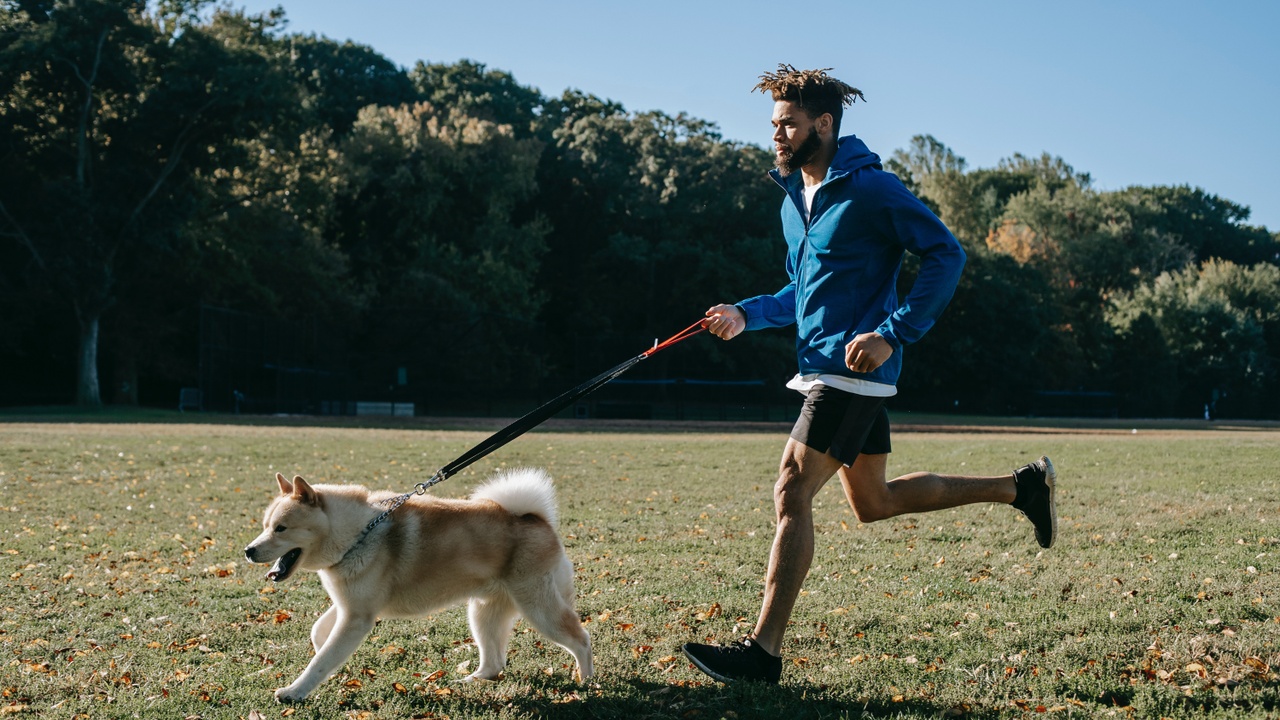
Tips for Running with Your Dog
Mar 08, 2021If you didn’t add a dog to your household during the past year, you probably know someone who did. Adopting a dog during the pandemic has become something of a national pastime, with the trend taking off during last March’s sudden lockdown. (Perhaps the best indication is the fact that online pet food sales rose by 77 percent during that month alone.)
Although running with your dog is great for bonding and keeping your furry friend active and healthy, just like choosing to adopt or buy a pet in the first place, it comes with its own set of considerations.
Here are some tips you should keep in mind before hitting the pavement with Fido in tow:
- Make sure your running buddy is the right breed and age.
Some breeds, like huskies, Dalmatians, and golden retrievers, are great at long-distance running, but others, like pugs and bulldogs, just weren’t made for running, especially in warm weather. These types of dogs, called brachycephalic dogs because of their smooshed faces, have respiratory systems that don’t allow for long-term, heavy exercise, and also make them overheat more easily.
If you have a puppy, it’s best to wait until he’s finished growing before you take him out for a run. That can vary based on the breed but is generally between 8 and 18 months. (Checking with the vet first to make sure your pup is ready to hit the road with you can’t hurt, especially for larger breeds that are more prone to hip dysplasia.)
- Check the temperature.
We, runners, tend to head out in whatever Mother Nature throws at us: rain, sleet, snow, blazing heat, freezing temperatures, baseball-sized hail — you name it, we’ll try to run in it. We can’t be that cavalier with our pets, though.
Dogs can suffer from heat stroke more easily than we can, which is why it’s best to limit running with your dog to days when the temperature is between 15 and 60 degrees Fahrenheit, or -10 and +15 degrees Celsius. To avoid heat stroke on high-temperature days, you can head out in the early morning or late in the evening, or find a trail with plenty of shade.
And don’t forget that a dog’s paws are sensitive to hot surfaces. They can easily get sore on hot asphalt in the summer. Running with your dog in the woods or on the sand is best if possible.
- Start slowly.
When you decide you want to start running with your dog, it’s something you should ease into. Like us, dogs need time to get in shape and work up to a desired distance and pace.
To start out, you should make sure your dog can comfortably walk at your side. That means not pulling ahead of you, chasing after squirrels, or veering back and forth across the sidewalk to track down interesting scents. Once your dog will stay by your side on walks without getting distracted, you can start increasing the pace. Again, start slowly with short jog intervals, then, once your dog has mastered those, you can move on to longer distances, like a mile and, eventually, several miles at a time.
- Shelve the speed work. At least for now.
You shouldn’t plan on a run with your dog going as smoothly as a run by yourself, especially at the beginning. (You still have to pick up after him, remember? Plus, even the most well-trained dogs will occasionally be thrown off by a certain stimulus, like a car honking.) That’s why, if you’re training for a race, you might want to leave your dog at home when you’re doing speed work or other intense workouts. Running with your dog on easy or recovery days is probably best.
- Watch for sore muscles.
Dogs can suffer from sore muscles just like we can. If he’s having trouble standing up a day or two after a run, muscle soreness may be the culprit. If your dog has sore muscles, you should give him a few days off to recover. To prevent muscle soreness from happening in the first place, make sure you ease into distance and pace increases.
- Don’t push too hard.
Instead of sweating through the skin like we do to cool down, dogs lower their body temperature by panting. Take frequent, short breaks — especially when you’re just starting to run with your dog — to let him rest, take care of business, and drink some water.
You can tell your dog is enjoying running with you if he wags his tail throughout the run and gets excited when you pull out his running leash. If he refuses to run, however or is excessively drooling or rapidly panting, he may be exhausted and need water and a long rest.
Also, make sure you give your dog plenty of water after a run.
- Make it a ritual.
Dogs love routine, so let him know it’s time for a run by giving him signals. Verbal cues like telling your dog it’s time for a run and non-verbal ones like pulling out the leash or harness will let him know it’s time to focus on the workout ahead.
Running with your dog is a fun way to spend time together and make sure you’re both getting the exercise you need.
Now get out there — and grab Fido — and run your life.
Enter your email address to get weekly episodes delivered to your inbox plus tips on how to become a physically and mentally stronger runner!
Don't worry, we won't blow up your inbox. We just want to send you some great info to help you in your running journey. We hate SPAM, and we will never sell your information, for any reason.

